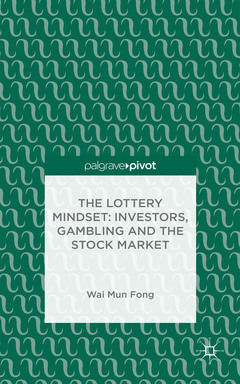Description
The Lottery Mindset: Investors, Gambling and the Stock Market, 2014
Author: Fong W.
Language: English
Subjects for The Lottery Mindset: Investors, Gambling and the Stock...:
Approximative price 58.01 €
In Print (Delivery period: 15 days).
Add to cartSupport: Print on demand
Description
/li>Contents
/li>Biography
/li>
Wai-Mun Fong is Associate Professor at the NUS Business School, National University of Singapore, where he teaches Personal and Corporate Finance and Wealth Management to PhD, MSc and Undergraduate level students. He obtained his PhD in Financial Economics from the University of Manchester in 1992, and has since contributed to and authored various financial books and journals. His main areas of research include empirical asset pricing, investment strategies, personal finance and behavioural finance.




